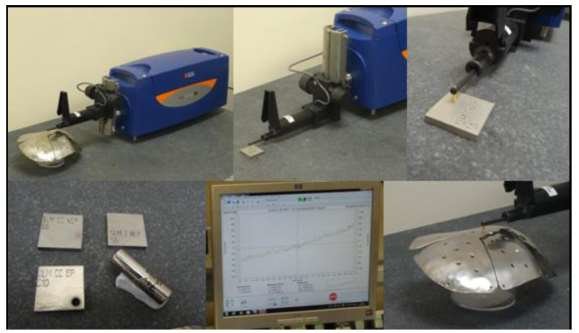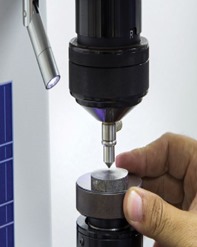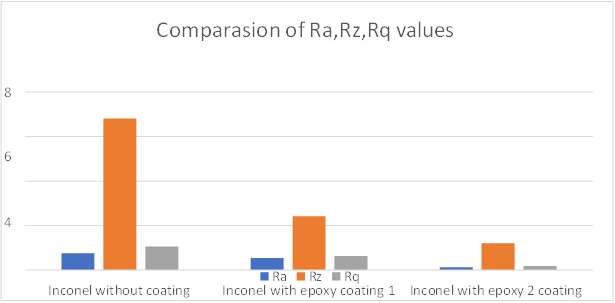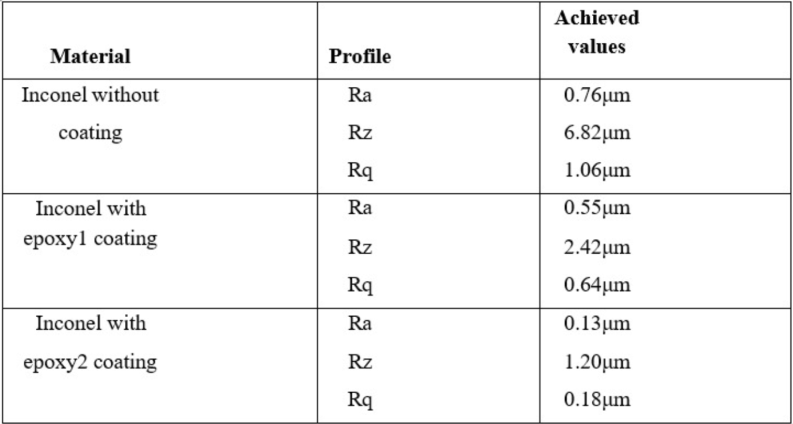Ijraset Journal For Research in Applied Science and Engineering Technology
- Home / Ijraset
- On This Page
- Abstract
- Introduction
- Conclusion
- References
- Copyright
Investigation of Microstructure Wear Resistance and Mechanical Properties of Inconel Super Alloy by Thermal Spray Coating
Authors: Mr. Santosh Kulkarni , Sripada Jain , Poola Lokeshwar , Surigi Koushik
DOI Link: https://doi.org/10.22214/ijraset.2025.66830
Certificate: View Certificate
Abstract
This research project aims to comprehensively investigate the microstructure, wear resistance, and mechanical properties of Inconel super alloy through the application of thermal spray coating. Inconel super alloys are renowned for their exceptional high-temperature performance and corrosion resistance, making them vital in various industries. The study focuses on enhancing the material’s surface properties through thermal spray coating, a technique widely employed for surface protection and performance improvement. The research will involve a detailed examination of the microstructure changes induced by the thermal spray coating process. It will assess how the coating affects the material’s wear resistance, which is a critical aspect in applications subject to abrasive and erosive forces. Furthermore, the project will delve into the alterations in mechanical properties, including hardness, strength, and ductility, following the coating process. By understanding how thermal spray coating influences the microstructure and properties of Inconel super alloy, this research seeks to provide valuable insights for enhancing the material’s performance in demanding environments, such as those encountered in aerospace, automotive, and industrial applications. The findings of this study are expected to contribute to the optimization of Inconel super alloy’s suitability for various high-performance engineering applications.
Introduction
I. INTRODUCTION
Inconel super alloys have earned a distinguished reputation as high - performance materials renowned for their exceptional resistance to high-temperature and corrosive environments. These nickel-based alloys are indispensable in industries like aerospace, automotive, and energy, where extreme conditions are the norm. However, optimizing the surface properties of Inconel super alloys is crucial to meet the stringent demands of these applications. Thermal spray coating technology offers a promising avenue to achieve this goal by enhancing the microstructure, wear resistance, and mechanical properties of these alloys. The microstructure of a material plays a pivotal role in determining its mechanical and thermal properties. Alterations in the microstructure can impact the performance of Inconel super alloys under high-stress conditions. Understanding these changes is essential for harnessing the full potential of these alloys.
This research project embarks on a thorough exploration of the microstructural modifications induced by thermal spray coating, un-ravelling the intricacies of this transformation. One of the primary concerns in industrial applications is wear resistance. Components exposed to abrasive and erosive forces must withstand significant wear and tear. Through thermal spray coating, we aim to bolster the wear resistance of Inconel super alloys, offering protection against the detrimental effects of friction, abrasion, and corrosion. By elucidating the impact of coating on wear resistance, we can enhance the longevity and reliability of these alloys in challenging environments.
Mechanical properties like hardness, strength, and ductility are vital attributes for materials used in high-performance applications. The project will delve into the changes in these properties following the thermal spray coating process, unveiling the potential for improving the mechanical robustness of Inconel super alloys.
In summary, this research project delves into the realm of thermal spray coating to unravel its influence on the microstructure, wear resistance, and mechanical properties of Inconel super alloys. The findings of this investigation have far-reaching implications for the optimization of these alloys, potentially their suitability for critical applications in aerospace, automotive, and various industrial sectors.
II. LITERATURE REVIEW
A. Qingbo Jia & Gu, Dongdong [1]
Inconel 718 parts made through selective laser melting (SLM). it investigates the effects of processing conditions on material properties, including densification, microstructure, microhardness, wear performance, and high-temperature oxidation resistance. Lower laser energy densities lead to a "balling" phenomenon, reducing part density, while higher energy densities result in near-full densification. Microstructures in SLM-processed Inconel 718 parts undergo distinct changes as laser energy density increases. optimally prepared parts exhibit uniform microhardness, low friction, and reduced wear rates due to the formation of an adherent tribo-layer on the worn surface. High-temperature oxidation resistance improves with higher laser energy density, primarily due to refined microstructural architectures. In summary, the paper delves into the relationship between processing conditions and material properties in Inconel 718.
B. Sanjay Kumar, Amit Kumar, Vinay Kumar, N.K.Singh [2]
Powder Mixed Electrical Discharge Machining (PMEDM) is crucial for machining challenging materials like Inconel 825 due to its unique properties. Inconel 825 is in high demand across industries for its properties, including high creep resistance, corrosion resistance, machinability, ductility, weldability, and low thermal expansion. The study focuses on machining Inconel 825 using PMEDM, which is widely used in aerospace, power plants, nuclear power plants, petrochemical, and chemical industries. Input parameters for the experiment include peak current (IP), gap voltage (GV), powder concentration (PC), and pulse on time (TON), while output parameters are surface roughness (SR) and material removal rate (MRR)Tungsten carbide is used as the tool during the experiment due to its hardness and minimal wear.
C. Y.L. Hu, X. Lin, S.Y. Zhang, Y.M. Jiang, X.F. Lu, H.O. Yang, W.D. Huang [3]
Impact of solution heat treatments on Inconel 625 superalloy fabricated through laser solid forming. The microstructure primarily consists of columnar grains, which remain unchanged until a solution temperature of 1200 °C is reached. Beyond this point, full recrystallization occurs, driven by the presence of large Laves phases that obstruct grain boundary migration. With increasing solution temperature, solute element diffusion and dissolution velocity rise noticeably, while the volume and size of Laves phases decrease, along with a reduction in dislocation density. Consequently, higher solution temperatures lead to decreased microhardness and yield strength, but the tensile strength remains stable, and elongation significantly improves.
D. Wang Yangfan, Chen Xizhang, Su Chuanchu [4]
Inconel 625 alloy fabricated through Cold Metal Transfer (CMT) Wire Arc Additive Manufacturing (WAAM). Microstructural analysis reveals variations in the microstructure across different layers of the specimens, with the bottom layer comprising fine primary cellular grains. The mechanical properties, including hardness and tensile properties, are assessed, and the influence of torch travel speed on these properties is examined. Increasing the travel speed results in a slight improvement in average micro-hardness, from 248 HV to 253 HV.
E. Rahul, Saurav Datta, Bibhuti Bhusan Biswal [5]
Impact of Cryogenic Treatment (CT) on tool and workpiece during Electro-Discharge Machining (EDM) of Inconel 825 superalloys is explored. The ease of machining is assessed through various performance indicators, including Material Removal Rate (MRR), roughness average (Ra), Surface Crack Density (SCD), and White Layer Thickness (WLT) formed on the machined surfaces. The study involves three main process parameters: peak discharge current (Ip), pulse-on duration (Ton), and duty factor (τ). EDM experiments are carried out using three different combinations of tools and workpieces. The research not only investigates the parametric effects on various machining responses but also conducts a comparative analysis of the chemical composition, metallurgical aspects, residual stress and micro-indentation hardness of the machined specimens produced using NTNW, CTTNW, and NTCTW.
III. OBJECTIVE
The specific objective of this project was
- To investigate the influence of varying thicknesses of Inconel superalloy thermal spray coatings on microstructural characteristics.
- To evaluate the relationship between coating thickness and mechanical properties such as hardness, tensile strength, and fatigue resistance.
- Optimize the coating thickness to achieve the desired combination of microstructural features and mechanical properties for specific applications.
- Explore the correlation between coating thickness, deposition parameters, and process conditions to establish guidelines for reliable coating thickness control.
- Conduct comparative studies with alternative coating techniques to highlight the advantages of thermal spray coating in terms of microstructure and mechanical performance across different thickness ranges.
A. Material Composition in Inconel Superalloy
INCONEL alloy is a solid-solution, strengthened, nickel-chromium-cobalt molybdenum alloy with an exceptional combination of high-temperature strength and oxidation resistance. The alloy also has excellent resistance to a wide range of corrosive environments, and it is readily formed and welded by conventional techniques.
Table 1 - Limiting Chemical Composition, %, of Inconel Alloy
|
Nickel |
44.5 min. |
|
Chromium |
20.0-24.0 |
|
Cobalt |
10.0-15.0 |
|
Molybdenum |
8.0-10.0 |
|
Aluminum |
0.8-1.5 |
|
Carbon |
0.05-0.15 |
|
Iron |
3.0 max |
|
Manganese |
1.0 max |
|
Silicon |
1.0 max |
|
Sulfur |
0.015 max |
|
Titanium |
0.6 max |
|
Copper |
0.5 max |
|
Boron |
0.006 max |
B. Thermal spraying Techniques
Epoxy coating using high velocity oxy fuel (HVOF):
The process of applying epoxy coating using high velocity oxy fuel (HVOF) involves heating a powdered epoxy resin and accelerating it through a supersonic
Fig: High velocity oxy fuel by epoxy coating

nozzle onto a substrate surface. The high velocity and heat of the HVOF process ensure a strong bond between the epoxy coating and the substrate.
1) Surface Roughness Testing using Talysurf
The roughness values Ra and Rz are measured using a profilometer gauge (Talysurf) in this experiment. With the use of a moving probe, a surface profilometer gauge is used to measure the roughness parameters with great precision.

Fig. 1. Talysurf.
2) Hardness Testing using Brinell Hardness Tester
Brinell hardness is determined by forcing a hardened steel or carbide ball of known diameter under a known load into a surface and measuring the diameter of the indentation with a microscope. We tested samples of different loading conditions.

Fig: Brinell hardness tester.
C. Advantages
- Enhanced Wear Resistance: One of the primary advantages of thermal spray coating on Inconel super alloy is the significant improvement in wear resistance. Coated surfaces can withstand abrasive, erosive, and adhesive wear more effectively, prolonging the lifespan of components.
- Tailored Microstructure: Thermal spray coating allows for the customization of the microstructure of Inconel alloys. By optimizing parameters, the coating can be tailored to meet specific microstructural requirements, enhancing material performance in high-stress environments.
- Extended Service Life: Coated Inconel components exhibit increased durability and reduced maintenance needs. This results in cost savings and improved operational efficiency, particularly in industries requiring high-temperature and high-stress applications.
- Corrosion Protection: In addition to wear resistance, thermal spray coatings can enhance the material's resistance to corrosion. This is especially valuable in environments where exposure to aggressive chemicals or high-temperature oxidation is a concern.
- Versatility: Thermal spray coating techniques can be applied to various shapes and sizes of components, making it a versatile method for improving the properties of Inconel super alloys in a wide range of applications.
D. Disadvantages
- Cost: The thermal spray coating process, especially when used with super alloys like Inconel, can be relatively expensive. Costs are associated with equipment, materials, and skilled labor.
- Surface Preparation: Achieving proper adhesion and coating quality requires rigorous surface preparation. This can be time-consuming and may involve additional steps in the overall manufacturing process.
- Thickness Control: Maintaining uniform coating thickness can be challenging, and deviations from the desired thickness may impact the coating's effectiveness and performance.
- Complexity: The thermal spray coating process is intricate and necessitates a deep understanding of materials, equipment, and application techniques. This complexity can be a barrier for smaller manufacturing facilities or those with limited expertise in thermal spray technology.
- Quality Control: Ensuring consistent and high-quality coatings can be challenging. Quality control measures are vital to verify that each coated component meets the desired specifications.

Fig - Comparasion of Ra, Rz, Rq Values
Table – 4.1 results of surface roughness by using talysurf device

Hardness testing is done using Brinell hardness tester and the achieved results are mentioned in the below table
Table-4.2 results of Hardness testing is done using Brinell hardness tester
|
Coating Thickness |
Force |
Time |
Ball Dia |
Size of Indentation |
Status of coating |
|
|
Original Sample |
- |
500 |
15 sec |
10mm |
1mm |
NO cracking |
|
1500 |
15 sec |
10mm |
2mm |
NO cracking |
||
|
3000 |
15 sec |
10mm |
3mm |
NO cracking |
||
|
Epoxy 1.1 |
1mm |
500 |
15 sec |
10mm |
2mm |
No crack |
|
1500 |
15 sec |
10mm |
4mm |
No crack |
||
|
3000 |
15sec |
10mm |
5mm |
No crack |
||
|
Epoxy 1.2 |
2mm |
500 |
15 sec |
10mm |
3mm |
Initial Crack |
|
1500 |
15 sec |
10mm |
3.2mm |
Completely spoiled |
||
|
Epoxy 1.3 |
3mm |
500 |
15 sec |
10mm |
- |
Completely spoiled |
|
- |
|
|
|
|
||
|
Epoxy 2.1 |
1mm |
500 |
15 sec |
10mm |
3mm |
Initial cracking |
|
1000 |
15 sec |
10mm |
3.1mm |
Epoxy coating damaged |
||
|
Epoxy 2.2 |
2mm |
500 |
15 sec |
10mm |
5mm |
Crack |
|
1000 |
15 sec |
10mm |
6mm |
Coating damaged |
||
|
Epoxy 2.3 |
3mm |
500 |
15 sec |
10mm |
- |
Completely damaged |
IV. FUTURE SCOPE
The future scope of investigating the microstructure, wear resistance, and mechanical properties of Inconel superalloy coatings by thermal spray coating offers numerous opportunities for advancing materials science and engineering. Here are some potential avenues for future research and development.
- Optimization of Coating Parameters: Explore the influence of various thermal spray parameters (e.g., spray distance, spray angle, powder feed rate, substrate temperature) on the microstructure, phase composition, and mechanical properties of Inconel coatings. Investigate novel deposition techniques and hybrid coating processes to achieve improved coating quality, thickness uniformity, and adhesion strength.
- Microstructural Characterization: Utilize advanced microscopy and spectroscopy techniques to characterize the microstructure, phase distribution, and grain morphology of Inconel coatings at different length scales (micro- to nano-scale).Investigate the effect of thermal spray process conditions on the formation of defects, such as porosity, oxide inclusions, and interfacial bonding, and develop strategies to mitigate them.
- Mechanical Property Enhancement: Investigate methods for enhancing the mechanical properties of Inconel coatings, including hardness, toughness, fatigue resistance, and ductility, through alloying, heat treatment, and post-coating processing. Explore the use of reinforcement materials (e.g., ceramic particles, metallic fibers) to tailor the mechanical behaviour and performance of Inconel coatings for specific applications
- Wear and Erosion Resistance: Study the wear mechanisms and tribological behaviour of Inconel coatings under various operating conditions, including dry sliding, abrasive wear, and erosive environments. Develop wear-resistant coatings with optimized microstructures, surface topographies, and phase compositions to minimize material loss and improve component lifespan.
- Corrosion Protection: Investigate the corrosion resistance and chemical stability of Inconel coatings in aggressive environments, such as acidic, alkaline, and corrosive media encountered in aerospace, marine, and chemical processing industries.
- Advanced Characterization Techniques: Explore emerging characterization techniques, including in-situ microscopy, atom probe tomography (APT), and high- resolution electron microscopy, to gain insights into the nanoscale structure-property relationships of Inconel coatings. Combine experimental measurements with computational modeling and simulation to predict coating performance, optimize design parameters, and accelerate materials development.
- Applications and Technology Transfer: Validate the performance of Inconel coatings in real-world applications through field trials, component testing, and industrial collaborations. Facilitate technology transfer and knowledge dissemination through academic-industry partnerships, collaborative research initiatives, and professional networking platforms.
Overall, the future scope of investigating Inconel superalloy coatings by thermal spray coating offers opportunities to develop advanced materials with tailored properties for a wide range of engineering applications, from aerospace and automotive to energy and infrastructure. By addressing key challenges and leveraging advances in materials science and manufacturing technology, researchers can contribute to the development of next-generation coatings with enhanced performance, reliability, and sustainability.
Conclusion
In conclusion, the research project \"Investigation of Microstructure, Wear Resistance, and Mechanical Properties of Inconel Super Alloy by Thermal Spray Coating\" holds great potential for advancing our understanding of Inconel super alloys and their application in high- temperature and high-stress environments. This study addresses several significant knowledge gaps in the field of materials science and engineering. The project\'s expected outputs are poised to provide invaluable insights into how thermal spray coatings affect Inconel alloys. Understanding the microstructural changes induced by the coating process is crucial for tailoring these materials to specific applications, particularly in industries that demand superior performance in challenging conditions. The research also aims to shed light on the enhancement of wear resistance, helping to identify specific wear mechanisms influenced by the coating process. This knowledge is essential for extending the service life of Inconel components exposed to abrasive and erosive forces. Furthermore, the investigation into alterations in mechanical properties following thermal spray coating is vital for designing components that can withstand high-stress operational conditions. By addressing these important problem gaps, the research project contributes to the optimization of Inconel super alloys, benefiting a wide range of industries, from aerospace to automotive and beyond. It serves as a stepping stone toward the development of innovative and high-performance materials and coatings that can thrive in challenging environments, ultimately driving progress and innovate.
References
[1] Qingbo Jia & Gu, Dongdong (2014) \"Selective laser melting additive manufacturing of Inconel 718 superalloy parts: Densification, microstructure and properties\" Journal of Alloys and Compounds,Volume585, 5 February 2014, Pages 713-721, https://doi.org/10.1016/j.jallcom.2013.09.171. [2] Sanjay Kumar, AmitKumar, Vinay Kumar, N. K .Singh (2018) “Study of Machining of Inconel 825 Super Alloy Using Powder Mixed EDM Process ” Journal of materials today proceedings,Volume5,Issue9,Part3,2018,Pages1812918134 https://doi.org/10.1016/j.matpr.2018. 06.148. [3] Y.L. Hu , X. Lin , S.Y. Zhang , Y.M. Jiang , X.F. Lu , H.O. Yang , W.D. Huang (2018) \" Effect of solution heat treatment on the microstructure and mechanical properties of Inconel 625 superalloy fabricated by laser solid forming\" Journal of Alloys and Compounds Volume 767, 30 October 2018, Pages330-344. https://doi.org/10.1016/j.jallcom.2018.07.087. [4] Wang Yangfan, Chen Xizhang, Su Chuanchu (2019) \"Microstructure and mechanical properties of Inconel 625 fabricated by wire-arc additive manufacturing\" Journal of Surface and Coatings Technology, Volume 374, 25 September 2019, Pages 116-123, https://doi.org/10.1016/j.surfcoat.2019.05.079. [5] Rahul, Saurav Datta, Bibhuti Bhusan Biswal (2019) \"Experimental studies on electro discharge machining of Inconel 825 super alloy using cryogenically treated tool/workpiece\" Journal of Measurement, Volume 145, October 2019, Pages 611-630, https://doi.org/10.1016/j.measurement.2019.06.006.
Copyright
Copyright © 2025 Mr. Santosh Kulkarni , Sripada Jain , Poola Lokeshwar , Surigi Koushik . This is an open access article distributed under the Creative Commons Attribution License, which permits unrestricted use, distribution, and reproduction in any medium, provided the original work is properly cited.

Download Paper
Paper Id : IJRASET66830
Publish Date : 2025-02-04
ISSN : 2321-9653
Publisher Name : IJRASET
DOI Link : Click Here
 Submit Paper Online
Submit Paper Online

